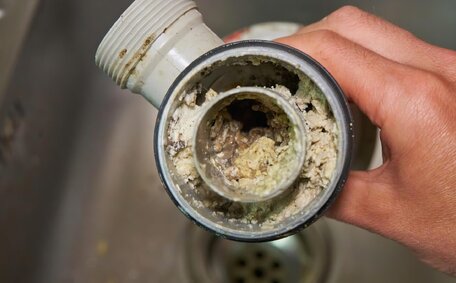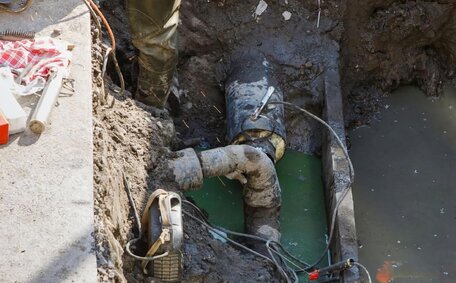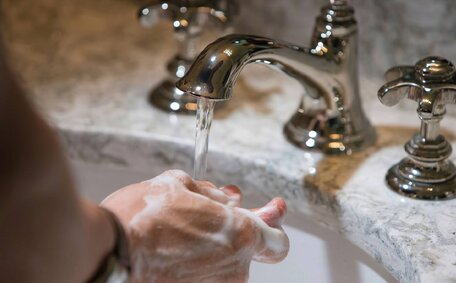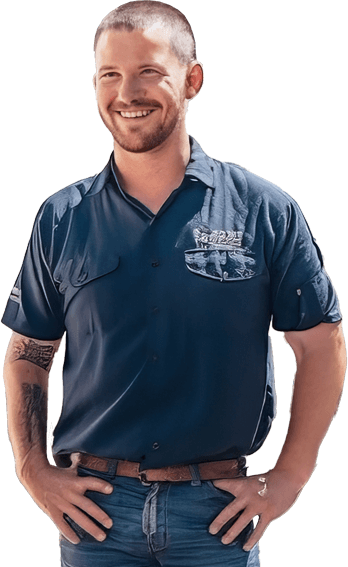Locating The Drain Valve On Your Hot Water System
Knowing where the drain valve is located on your hot water system is important for flushing out sediment buildup or making necessary repairs. The drain valve serves as an access point to empty water from the tank.
Tank Water Heaters
Tank-style water heaters, whether gas, electric, or hybrid, feature the drain valve at their base or lower side. This valve, resembling a garden hose bib, facilitates water drainage upon opening.
Tankless Water Heaters
For tankless water heaters, refer to the owner’s manual to find the drain valve, which could be part of the heat exchanger or located on the inlet and outlet pipes.
How To Identify Issues With Your Drain Valve
Visible Signs of Damage
Inspect the drain valve for cracks, corrosion, mineral deposits, and water stains, as these signs may indicate the hot water system requires servicing.
Leaks When Draining
Open the heater drain valve to check for drips or leaks that may hinder the valve’s proper water discharge or affect adjacent pipes and connections. This may signal issues with the valve seal or connections.
Odd Noises
Pay attention and check hot for any unusual noises from around the drain valve when operating your water system. This includes banging, rattling, hissing or gurgling sounds which can indicate partial blockages, trapped air or problems with water flow.
Difficult To Operate
Difficulty in opening or closing the drain valve smoothly suggests a need for replacement. Stiffness, jamming or requiring extra force are common signs of wear and damage over time.
When To Call A Professional
Seek immediate professional plumbing help for drain valve replacement if faced with major leaks, operational issues, or no hot water—plumbers can diagnose and resolve problems effectively.
Checking Water Pressure And Temperature
Testing Water Pressure
Monitor the cold water pressure of your hot water system, which should be between 25 to 80 PSI with the tap running, to help identify potential drain valve issues.
Attach a water pressure gauge to a nearby tap to check if the unit’s pressure is optimal—extremes in pressure indicate a problem.
Verifying Water Temperature
Inadequate heating that prevents water expansion in the tank can impede the drain valve’s proper operation.
Should temperatures be low, recalibrate the thermostat. A single reading with a thermometer can confirm your hot water’s temperature.
Persistent low temperatures or lack of hot water are signs of deeper issues necessitating professional repairs, possibly including drain valve replacement.
Inspecting The Valve And Connections For Leaks
Regularly inspect the drain valve and surrounding pipes for leaks or moisture, which can stem from gradual wear and tear.
Test Water Tightness
Replace Worn Out Parts
Replace cracked valve seals or tighten loose connections promptly. Applying pipe thread sealant can enhance the seal and prevent fitting leaks.
Seeking assistance from a qualified plumber ensures proper repairs are made to securely restore water tightness and functionality.
When To Obtain Replacement Parts
Consult The Manual And Supplier
Consult the user manual or manufacturer to ensure the correct replacement model for your unit’s drain valve; mismatched parts can hinder functionality.
Signs Requiring Replacement
Consider obtaining a new drain valve if you notice consistent difficulties like leaking, corroded or cracked fittings, jamming, or inability to completely stop water flow. As valves age and wear internally, replacement becomes necessary.
During Routine Maintenance
Industry experts often recommend replacing drain valves every 5-7 years as part of ongoing hot water system maintenance. Doing so helps prevent sudden valve failure leading to leaks or floods.
Use A Licenced Plumber
While the drain valve itself may seem like a simple DIY replacement job, using a qualified plumber ensures the unit connects properly without leaks. They can also examine connections and pipes for additional wear while servicing.
Resetting And Troubleshooting Electric Hot Water Systems
Shut Off Power Supply
Start by performing a turn off power to the electric hot water system at the main circuit breaker panel. This ensures safety while working on the unit.
Check For Tripped Breaker
Inspect if the dedicated breaker for the water heating unit has tripped. Make sure to reset it to the ON position if it has tripped. Tripping can occur from power spikes or electrical faults.
Reset Thermostat And Heating Element
Many electric systems have a red or similar button to reset internal components. Press this reset button and check if the heating element reheats the water after powering back on. If not, the element may need replacing.
Inspect For Power At Heater
Use a multimeter to verify power at the electric water heater. Active current means internal parts may need testing, while no power suggests an electrical issue with the system.
If troubleshooting fails to restore your electric hot water system, contact a professional electrician or plumber for precise diagnostics and repair solutions.
Checking The Pilot Light On Gas Systems
Locate The Pilot Light Assembly
On most gas hot water systems, the pilot light assembly is attached near the main burner. Refer to your owner’s manual for the exact location. There should be a small metallic nozzle directed at the main burner.
Inspect The Flame
The pilot light should exhibit a consistent blue flame with slight yellow tipping. If there’s no flame, it has extinguished and needs relighting.
Relight The Pilot
If the flame is out, turn off gas supply and allow any built up gas to dissipate for 5 minutes. Push in the pilot button while holding an ignition source to relight. Continue holding the button for 30 seconds after the flame ignites to properly heat the thermocouple.
Test Functionality
After relighting, turn on a hot water tap to check if the system is functioning properly. The main burner should ignite from the pilot flame’s heat. If not, issues with the thermocouple, gas control valves or airflow may be present requiring professional service.
Safety Tips
Ensure the gas supply is turned off when servicing your gas water heater or operating other gas appliances. Ensure proper ventilation in the area and do not store flammable materials nearby. If aroma persists or you are unable to relight the pilot, call us for assistance to avoid risks.
Adjusting The Thermostat Settings
Checking the Thermostat
The thermostat controls the water temperature inside your hot water system’s storage tank. Check if it is correctly calibrated between 60-75°C. Temperatures exceeding 75°C can damage fittings while lower temperatures may not heat water sufficiently for needs.
Testing Thermostat Accuracy
Use an independent thermometer to test the temperature of water from a hot tap near the unit. Compare this reading with the thermostat setting to determine accuracy.
Adjusting the Temperature
For thermostat adjustment, follow your owner’s manual for calibration. Gradually modify the dial, aiming for a water temperature within the 60-75°C range.
Signs of a Faulty Thermostat
A thermostat that doesn’t affect water temperature may be defective, necessitating replacement. Faulty thermostats can contribute to drain valve problems due to inadequate water heating.
Consider contacting a plumber to install a new thermostat matched specifically for your hot water heater.
Flushing The Tank And Pipes
When to Flush the Hot Water System
Flushing your hot water system and connected pipes should occur annually. Doing so removes mineral deposits and sediment that can build up inside the tank, reducing efficiency.
Flushing Procedure
- Turn off power/gas supply to water heater and let cool completely
- Attach a garden hose to the drain valve and place the other end at a floor drain
- Open the relief valve at the top of the tank
- Open the drain valve completely until water runs clear and tank empties
- Close drain valve and refill system
- Check thermostat setting and relight pilot if needed
Importance of Flushing
Improving Water Flow And Pressure
Adjusting the Drain Valve
If water flow seems restricted, inspect the drain valve for obstructions and ensure it is fully open. Sediment buildup or partial closure can impede proper flow. Also check that valve connections are tightened securely.
Increasing Water Pressure
Low pressure at hot water outlets can result from issues inside the pipes reducing flow. Consider installing a booster pump if pressure reads below 25 PSI. For optimal function, aim for 40-60 PSI.
When To Call A Professional
Contact a qualified plumber if adjusting the drain valve and water pressure does not restore adequate hot water flow for your needs. Professionals can diagnose and repair restrictive piping, limescale blockages, faulty pressure relief valves or other complex issues.
When To Call A Professional Plumber
Emergency Situations
Contact a professional plumber immediately if you experience any of the following:
- Inability to stop water flow through the drain valve
- Total no hot water from the system
- Gas leaks or gas smells
- Faulty electrical wiring tripping the circuit
Complex Repairs or Replacement
Also seek assistance from qualified plumbers for issues like when the pilot light goes out:
- Comprehensive repairs or replacements due to age or wear
- Modifications for energy efficiency or size upgrading
- Installing complicated controllers or smart technology
- Connecting new gas or electric hot water systems
North Mead Plumbing technicians can accurately assess and reliably repair any issues, ensuring full operational restoration. For swift help, contact us on 1300 349 338 or via [email protected].
Safety Issues And Expert Repairs
Gas System Hazards
DIY attempts on gas water heater repairs pose substantial risks, from gas leaks to fire hazards and carbon monoxide exposure. Caution is paramount.
Electrical Dangers
The electrical components in electric water heaters can deliver nasty shocks and electrocution if safety practices are not followed when attempting maintenance or repairs.
Utilise Professional Plumbers
With the dangers involved, it is highly advisable to enlist professional plumbers to undertake repairs or troubleshooting. Licenced technicians have the expertise to make fixes safely plus the proper equipment to detect leaks or faults.
Benefits of Expert Servicing
Beyond safety, using qualified tradespeople for hot water system repairs ensures reliability, compliance with regulations and often saves money over time compared to DIY fixes. Their preventative maintenance can also catch issues early and avoid a break down.
For professional assistance servicing your hot water system, contact the knowledgeable team at North Mead Plumbing on 1300 555 1234.
Replacement And Preventative Maintenance
Clear indicators, such as systems older than 8-10 years, signal the need for a hot water system replacement. Have a plumber assess its condition and efficiency. There are clear signs indicating when a full replacement of your hot water system is necessary.
Dramatically extend your system’s lifespan with biennial preventative maintenance, including sediment flushing, anode replacement, and inspection of valves and heating elements. Preventative care ensures hot water supply remains reliable while avoiding unexpected breakdowns or safety hazards.
Concluding Remarks On Drain Valve Management
As a critical component for flushing hot water systems, keeping the drain valve in good working order is essential preventative maintenance. Depend on professional plumbers for precise assessment, and to perform necessary repairs or replacements.
Regularly inspect for leaking hot water, or damage and replace worn parts proactively. Take safety precautions when troubleshooting electrical or gas systems. Attempting complex repairs yourself can risk injury or further issues.
Maintain performance and longevity by regularly checking the drain valve, securing connections, and yearly system flushing. Don’t hesitate to call the knowledgeable technicians at North Mead Plumbing on 1300 349 338 for assistance maintaining or servicing your hot water system.






